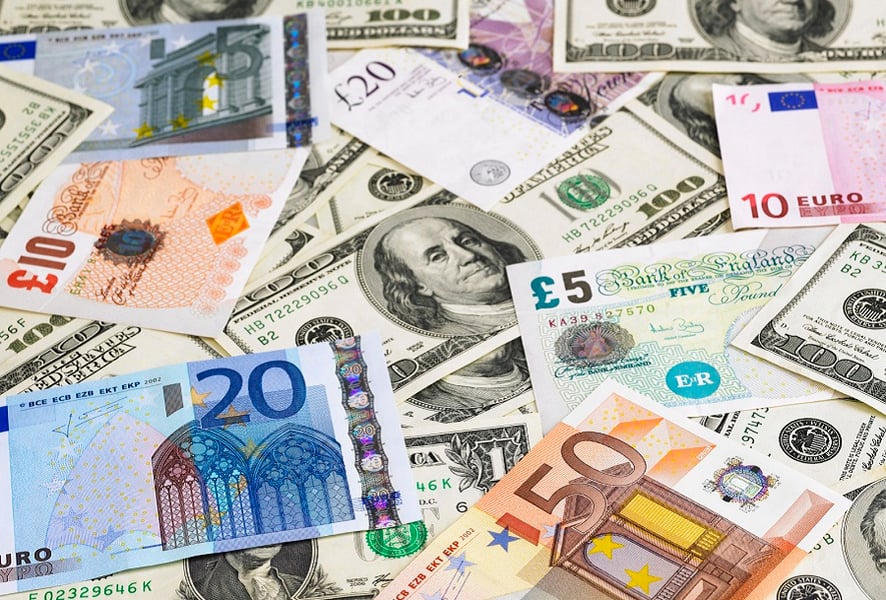For U.S. investors, the case for international equity investing remains compelling in spite of all the market turmoil of the last few years. The reasons are well-rehearsed: about two-thirds of the global equity market by capitalization is outside the U.S., and many leading companies are domiciled elsewhere. And, of course, there are the benefits of portfolio diversification.
For investors seeking exposure to international equities, movements in exchange rates are an important concern. This issue has been front and center as central banks around the world have cut interest rates, creating further volatility in the currency markets. Currency-hedged funds offer investors and advisers a way to invest internationally while managing against the risk that a stronger U.S. dollar can impose on foreign-based equity returns. However, hedging can also reduce those returns when the U.S. dollar weakens.
(More: Volatility, rates, currencies bolster case for allocation to global high yield)
History shows that the better-performing strategy (hedged or non-hedged) can vary from year to year and, like all short-term market behavior, is difficult to predict. What's more, the best-performing strategy in one equity market might not be the best approach in another during the same time period. Volatility aside, the key point to keep in mind is this: Whether you use a fully hedged or a non-hedged strategy, you're effectively making a currency call that is inherently difficult to time.
TWO RETURN STREAMS
International equity investing typically captures two return streams for U.S. investors: equity market returns and currency returns. Although the average currency returns of developed countries are widely believed to revert toward zero over very long time horizons, fluctuations can be dramatic during shorter periods, materially impacting returns either positively or negatively. Currency hedging can help manage the risks of large currency movements, but the extremes of either 100% hedged or 100% unhedged strategies introduce an inherent view on the direction of the U.S. dollar.
The challenges around this are twofold. First, a fully hedged portfolio historically has curtailed returns when the U.S. dollar weakened relative to international currencies, whereas an unhedged portfolio historically has underperformed when the U.S. dollar strengthened. Unfortunately, it is notoriously difficult to predict currency movements, which can make it challenging to anticipate when a hedged or unhedged strategy might be the better option.
Second, while a fully hedged currency position often is assumed to help mitigate volatility, it can actually increase an investment's risk profile, depending on the specific dynamics of the underlying currencies.
(More: Yellen, yuan and yields: Global economies are more closely linked than ever)
To illustrate the point, take a look at the performance of two markets — developed Europe and Japan — over the 10-year period ended Dec. 31, 2014. In developed Europe, increasing the currency-hedged percentages steadily reduced volatility; however, the reverse held true for Japanese markets.
This divergence was due to differences in correlation between the currency return and the equity market return in local currency. This correlation has been strongly negative for Japan; therefore, the unhedged currency exposure has provided a natural hedge against fluctuations in the Japanese stock market. Hedging currency risk effectively reduces this natural hedge, and thus, volatility rises as the currency hedge percentage increases. The correlation has been positive in developed Europe, which means that currency exposure has added to equity risk and hedging this exposure has reduced volatility.
CHALLENGE FOR INVESTORS
The challenge for investors is that they have no way of predicting how currency hedging will impact future returns. Logic suggests that a modified approach using a 50% currency-hedged portfolio should provide a way to navigate between these two extremes. In fact, our research shows that half-hedged portfolios do just that — reduce the potential risk of misreading extreme currency movements, in either direction, while lowering the inherent volatility in certain key markets.
This approach, which we've called the “hedge of least regret,” can be applied across a broad range of currency scenarios to help investors gain international equity exposure while mitigating the effect of exchange rate fluctuations, without taking an active bullish or bearish stance on the direction of the U.S. dollar or foreign currencies.
Much research continues to show that U.S. investors are underexposed to global equities. The bull market in U.S. stocks, now well into its seventh year, has lifted S&P 500 Index valuations above the historical average. By contrast, international equity valuations remain below the historical average, and in some markets, such as Japan, valuations are near the low end of the historical range. Add in easy monetary policies for many of these countries, and a long-term investment thesis begins to emerge.
For investors considering adding to their global positions, rapid swings in currencies from the yuan to the euro may still give pause. In the absence of strong convictions around the direction of the U.S. dollar, euro, yen and other global currencies, these investors may find the most practical way to address exchange rate risk is through a balanced, fixed 50% currency hedge.
Adam Patti is CEO of IndexIQ.







